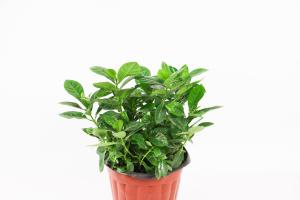Can You Paint Plastic Plant Pots?
Are you tired of the plain, boring plastic plant pots in your garden? Do you want to add some personality and color without having to buy new pots? The good news is that painting plastic plant pots can give them new life and make them look like new again. However, before you start this project, there are a few things you should consider.
Choosing the Right Paint
The type of paint you need for plastic plant pots is important. Not all paints work well on plastic, and you don't want to waste your time and money on a paint that won't stick or will peel off quickly. You should look for a spray paint that specifically states on the label that it's suitable for use on plastic surfaces. Some good options are Rust-Oleum Universal All Surface Spray Paint, Krylon Fusion All-In-One Spray Paint, and PlastiKote 3100 Super Spray Paint.
Preparing Your Plant Pots
Before you start painting, you need to properly prepare your plant pots. The first step is to clean them thoroughly with soap and water, and let them dry completely. Then, you should sand the surface lightly with a fine-grit sandpaper to create a rough surface that the paint can adhere to. You can also use a degreaser to remove any oil or grease that may be on the surface. Finally, apply a coat of primer to ensure that the paint bonds properly and lasts longer.
Applying the Paint
Now that your plant pots are clean and prepped, it's time to apply the paint. It's best to apply the paint in light, even coats, rather than one heavy coat, to prevent drips and achieve a smooth finish. Follow the instructions on the can to determine how long to wait between coats and how long it takes for the paint to dry completely. If you want to add decals or stencils, wait until the paint is dry before applying them.
Caring for Your Painted Plant Pots
With proper care, your painted plant pots can last for several seasons. However, it's important to remember that painted plastic is still susceptible to scratching and fading, especially if it's exposed to the elements or constant handling. To extend the life of your painted plant pots, consider placing them in a shady spot, protecting them from rain or snow, and handling them gently when moving or planting. It's also a good idea to touch up any chips or scratches with the same paint and follow the manufacturer's instructions for reapplication.
In Conclusion
Painting plastic plant pots is a great DIY project that can breathe new life into old, tired-looking pots. By using the right paint and properly preparing the surface, you can achieve a smooth, durable finish that can withstand the elements and handling. Remember to handle your painted plant pots with care, and they can be a part of your garden for years to come.

 how many times do yo...
how many times do yo... how many planted tre...
how many planted tre... how many pine trees ...
how many pine trees ... how many pecan trees...
how many pecan trees... how many plants comp...
how many plants comp... how many plants can ...
how many plants can ... how many plants and ...
how many plants and ... how many pepper plan...
how many pepper plan...
































